
1913 Great Lakes storm

The Great Lakes Storm of 1913, historically referred to as the "Big Blow", the "Freshwater Fury" or the "White Hurricane", was a blizzard with hurricane-force winds that devastated the Great Lakes Basin in the United States Midwest and the Canadian province of Ontario from November 7–10, 1913. The storm was most powerful on November 9, battering and overturning ships on four of the five Great Lakes, particularly Lake Huron. Deceptive lulls in the storm and the slow pace of weather reports contributed to the storm's destructiveness.
The deadliest and most destructive natural disaster ever to hit the lakes,[1] the Great Lakes Storm killed more than 250 people, and destroyed 19 ships and stranded 19 others. The financial loss in vessels alone was nearly US$5 million, or about $100 million at current value.[2]tons, such as coal, iron ore, and grain.[3] This included about $1 million at current value in lost cargo totalling about 68,300
The storm originated as the convergence of two major storm fronts, fuelled by the lakes' relatively warm waters—a seasonal process called a "November gale". It produced 90 mph (145 km/h) winds, waves over 35 feet (11 m) high, and whiteout snowsqualls. Analysis of the storm and its impact on humans, engineering structures and the landscape led to better forecasting and faster responses to storm warnings, stronger and more construction (especially of marine vessels), and improved preparedness.
While the boat was being lowered into the water, a breaking wave smashed it into the side of the ship. The men disappeared into the near-freezing waters below. The following shipwreck casualties have been documented:

- Lake MichiganPlymouth (barge): 7 victims
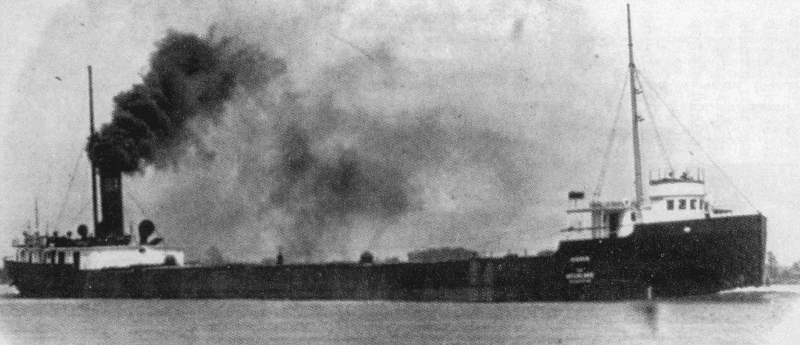
Lake Erie
Of the twelve ships that sank in the storm, five have never been found: Henry B. Smith, Leafield, James C. Carruthers, Hydrus, and the barge Plymouth. The most recent discovery was that of Wexford in the summer of 2000.
Turret Chief

Illinois steamer

LC Waldo
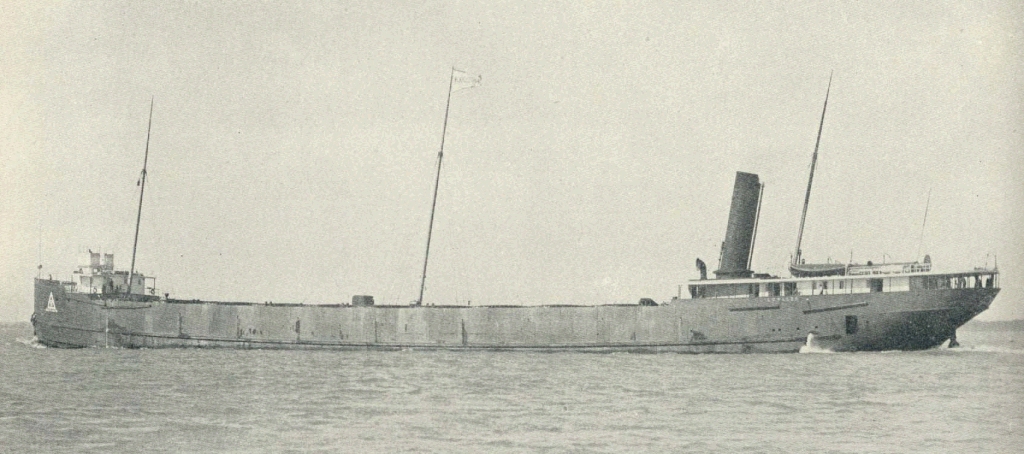
Upside down near the southern end of Lake Huron
LC Waldo aground, 1913 Great Lakes storm
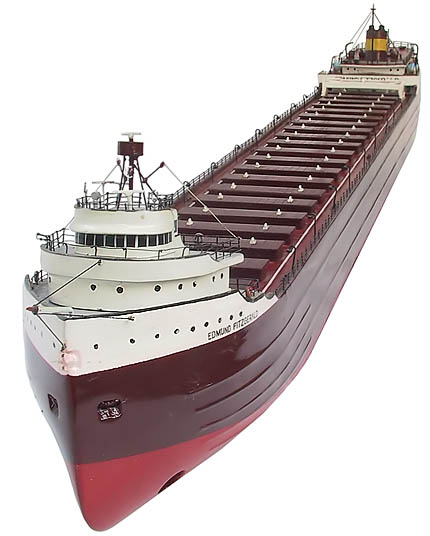
The last voyage
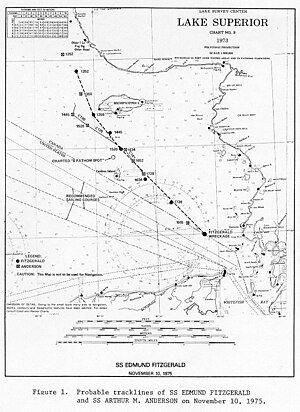 Fitzgerald left Superior, Wisconsin on the afternoon of November 9, 1975 under Captain Ernest M. McSorley. She was en route to the steel mill on Zug Island, near Detroit, Michigan, with a full cargo of taconite.[3] A second freighter, Arthur M. Anderson, destined for Gary, Indiana out of Two Harbors, Minnesota, joined up with Fitzgerald. Fitzgerald, being the faster ship, took the lead while Anderson trailed not far behind.[4]
Fitzgerald left Superior, Wisconsin on the afternoon of November 9, 1975 under Captain Ernest M. McSorley. She was en route to the steel mill on Zug Island, near Detroit, Michigan, with a full cargo of taconite.[3] A second freighter, Arthur M. Anderson, destined for Gary, Indiana out of Two Harbors, Minnesota, joined up with Fitzgerald. Fitzgerald, being the faster ship, took the lead while Anderson trailed not far behind.[4] Crossing Lake Superior at about 13 knots (15 mph/24 km/h), the boats encountered a massive winter storm, reporting winds in excess of 50 knots (58 mph/93 km/h) and waves as high as 35 feet (10 m). Because of the storm, the Soo Locks were closed. The freighters altered their courses northward, seeking shelter along the Canadian coast. Later, they would cross to Whitefish Bay and approach the Sault Ste. Marie locks.
On the afternoon of November 10, Fitzgerald reported a minor list developing and top-side damage including the loss of radar, but did not indicate a serious problem. She slowed to come within range of receiving Anderson's radar data and for a time Anderson guided the Fitzgerald toward the relative safety of Whitefish Bay. The last communication from the boat came at approximately 19:10 (7:10 PM), when Anderson notified Fitzgerald of being hit by rogue waves or perhaps seiche waves large enough to be caught on radar, that were heading Fitzgerald's way and asked how she was doing. McSorley reported, "We are holding our own." A few minutes later, she suddenly sank – no distress signal was received. A short ten minutes later Anderson could neither raise Fitzgerald nor detect her on radar. At 20:32, Anderson informed the U.S. Coast Guard of their concern for the boat.






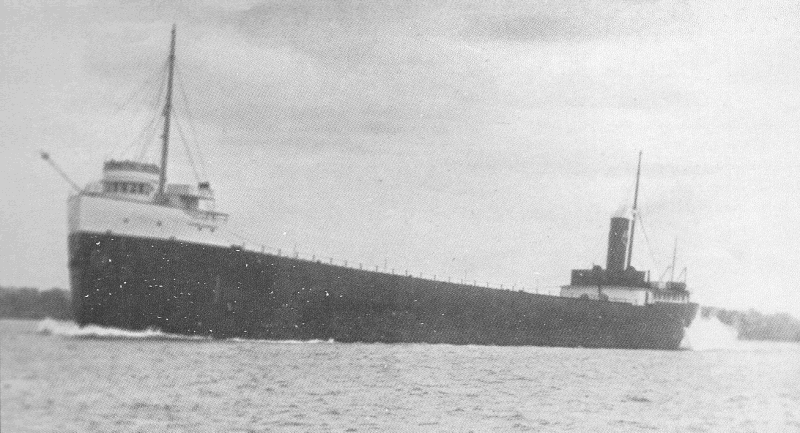
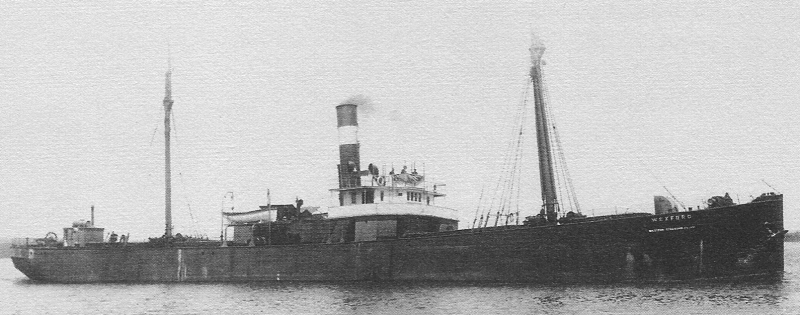






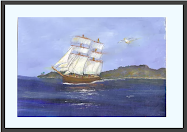


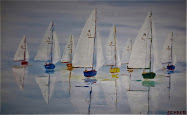





No hay comentarios:
Publicar un comentario